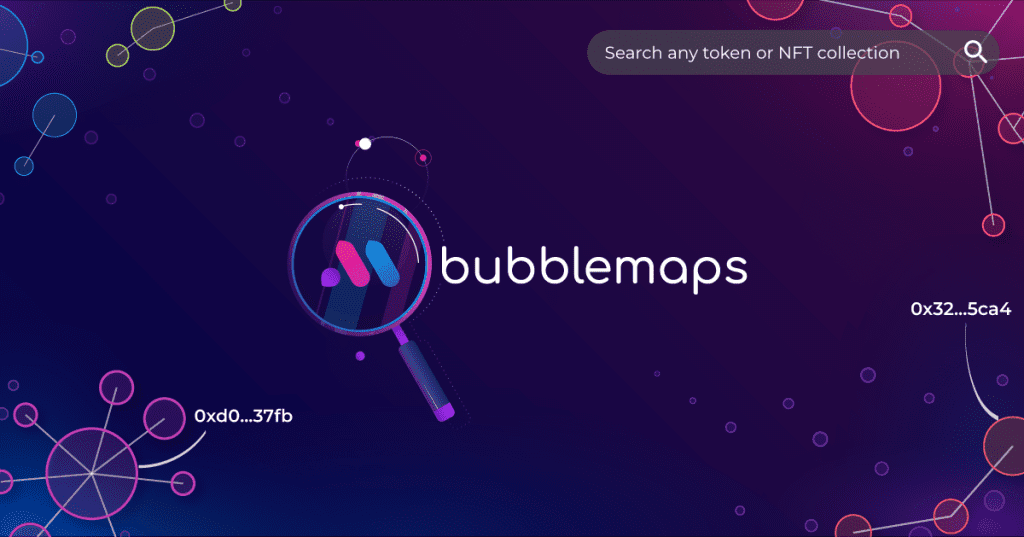
In an information-asymmetric cryptocurrency market, the transparency of token distribution has always been the most vulnerable point for investors. When a Meme coin skyrockets 300% after being listed on a DEX, most people only see the price curve, while Bubblemaps reveals the harsh reality that the top five wallets control 70% of the supply. This ability to transform on-chain data into visual insights is becoming a new weapon against insider manipulation.
Tearing apart the disguise of token distribution
Traditional token audits rely on voluntary disclosures from project parties or third-party reports, but the granularity and authenticity of on-chain data far surpass any white paper. The core value of Bubblemaps lies in its intelligent clustering algorithm—it can automatically identify associated wallet clusters, even if these addresses are intentionally dispersed through mixers or intermediary accounts. For example, a popular new coin claims 'completely decentralized distribution', but the Bubblemaps chart shows that 30% of the tokens ultimately flow to the same EOA signing address. This structural risk is often deliberately ignored during the frenzy of a bull market.
More critically, it has a real-time advantage. Compared to services like Certik, which require weeks for audit cycles, Bubblemaps can generate holding heat maps within hours after the token contract is deployed. In 2023, a certain animal coin project on the Solana chain dispersed holdings through 50 disguised addresses, but the platform exposed manipulation traces through gas fee sources and transaction timing analysis. Ultimately, the coin collapsed 48 hours after listing, and users who were alerted in advance avoided 75% of their losses.
Community-driven hunting game
The Intel Desk function turns on-chain reconnaissance into a game of collective intelligence. When an anonymous team launches a new protocol, community investigators can earn BMT rewards by tracking the initial funding sources of VC wallets and verifying the authenticity of team lock-up contracts. This model generates astonishing efficiency: early investors' holdings in a certain lending protocol on the Blast network were quickly locked down as three institutional disguises, forcing the project party to amend the token release terms.
But the real innovation lies in the design of economic incentives. The $BMT token is not just a simple governance certificate but serves as a settlement unit for investigative contributions. Users can earn token rewards and future protocol revenue sharing after their wallet-related evidence is verified by the algorithm. This model creates a new balance in a cryptocurrency market rife with information arbitrage—the value of insider information is partially transferred to transparent actors.
Trust reconstruction at the infrastructure layer
The technological moat of Bubblemaps lies in its data analysis dimensions. Ordinary holding analysis tools only display balance distributions, while this platform can identify more dangerous patterns: for example, tracing actual controllers through Uniswap LP token ownership, or discovering disguised lock-up through NFT staking contracts. When a DeFi project claims 'liquidity is completely controlled by the community', its chart shows that 60% of LP tokens are staked in smart contracts controlled by the team, which directly affects the token valuation model.
It is worth noting the platform's recently added 'regulatory sandbox view' feature. By tagging wallet labels that meet SEC compliance frameworks (such as accredited_investor.verified), it provides institutional investors with analysis dimensions that conform to traditional financial standards. This attempt to bridge traditional finance with on-chain native analysis may become a key infrastructure for the next stage of the compliance process.
In the aftermath of the FTX fallout, the market's demand for transparency has extended from exchanges to on-chain assets. What Bubblemaps represents is not just tool iteration but the budding of a new paradigm—when holding charts can influence valuations like financial statements, the pricing efficiency of the cryptocurrency market will undergo a qualitative leap. However, it is worth noting that true decentralization should not stop at visualization but should move towards the substantive decentralization of governance power, which may be the ultimate proposition that all on-chain analysis tools need to face.

